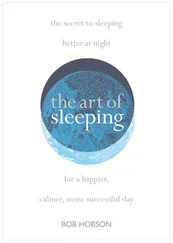1 ...6 7 8 10 11 12 ...19  It’s fun and useful for young children to remember where everybody sits and to think about what the family needs to use during the meal. If they’re feeling particularly creative, let them make place cards, or a menu, or whatever they wish, to create the desired ambiance.
It’s fun and useful for young children to remember where everybody sits and to think about what the family needs to use during the meal. If they’re feeling particularly creative, let them make place cards, or a menu, or whatever they wish, to create the desired ambiance.
Mealtime rituals and routines differ vastly from family to family, but quite commonly the end of the meal is often the time when children seem to magically disappear and the grown ups are left with the devastation that is the post-dinner dining table. You can occasionally involve the little ones in clearing up the mess with some fun and games, however. For example:
Clear the table with your children helping as best they can alongside, in the manner of robots or fairies, magicians or monsters.
 Make some attractive and tactile ‘job stones’ to pick out of a cloth bag to allocate tasks. These are easy to make by painting, drawing or sticking pictures from magazines onto smallish pebbles with PVA glue. Each stone’s picture should represent one of the jobs required to clear the table, for example: collect cups, cutlery, plates and bowls, wipe the table and sweep the floor. The aim is to empty the bag of stones – and complete the jobs – before going off to play something else.
Make some attractive and tactile ‘job stones’ to pick out of a cloth bag to allocate tasks. These are easy to make by painting, drawing or sticking pictures from magazines onto smallish pebbles with PVA glue. Each stone’s picture should represent one of the jobs required to clear the table, for example: collect cups, cutlery, plates and bowls, wipe the table and sweep the floor. The aim is to empty the bag of stones – and complete the jobs – before going off to play something else.
Offer an incentive of a game or some other playful activity at the table once it has been cleared. This can be a real motivator for children of all ages; it’s an example of the When/Then technique (see here).
Making beds
Making the beds is a daily chore that usually takes us grown ups mere seconds in the modern world of duvets, however, small children can find bedding incredibly cumbersome and heavy to manoeuvre. You can still include them, though, by allocating them aspects of the job that they can manage.
Start by making it a job you do together – you could shake and straighten the duvet while your little one plumps and places the pillow.
 Young children love to arrange bedtime soft toys. This can be made even more fun with a song:
Young children love to arrange bedtime soft toys. This can be made even more fun with a song:
There was one in the bed 
There was one in the bed
And the little one said, ‘Roll over, roll over.’
So he rolled over and another popped in,
Cuddled up tight, and gave a grin
‘Please remember to tie a knot in your pyjamas,
Single beds are only made for one, two. . .’
Continue with ‘ three . . . four . . . in the bed’ until all the toys are in position.
Changing the sheets
This is not usually a daily chore, but it still fills some parents with dread – especially if their children have reached the bunk-bed or cabin-bed phase; I know how difficult it is to get the sheets into those bed corners. However, try these playful activities and include your children when you can, and you may even look forward to sheet-changing day.
 Have a game of ‘pile-up’. See how quickly you can strip the beds – your child does the pillowcases, you do everything else. The person who finishes their job first gets to ‘flomp’ into the big pile of discarded linen.
Have a game of ‘pile-up’. See how quickly you can strip the beds – your child does the pillowcases, you do everything else. The person who finishes their job first gets to ‘flomp’ into the big pile of discarded linen.
‘Monkeys on the bed.’ We have a rule in our house that this game is only allowed when there are no sheets on the beds and when the grown up is close at hand, putting the covers on duvets and pillows; it definitely requires supervision. It’s a fun game that gets them burning off lots of energy. Your little monkeys simply jump up and down on the bed singing the following song (other actions optional):
Monkeys on the bed
Three little monkeys jumping on the bed
One fell off and bumped his head.
Mummy called the doctor, and the doctor said,
‘No more monkeys jumping on the bed.’
Two little monkeys jumping on the bed,
One fell off and bumped his head.
Mummy called the doctor and the doctor said,
‘No more monkeys jumping on the bed.’
One little monkey jumping on the bed,
He fell off and bumped his head.
Mummy called the doctor and the doctor said,
‘No more monkeys jumping on the bed.’
 ‘Wonderful wafting.’ When my two children were very small, they loved nothing better than to lie on the floor while we wafted the clean, fresh-smelling sheets and covers over them again and again – and occasionally we covered them up, pretending they’d disappeared. It made them giggle and wriggle so much. If you try this, but need a way out of the game (it is rather open-ended), you might try starting to waft a pillowcase at a doll or teddy. Your child may well take the bait and join in, then take over, that game instead – leaving you free to complete the job in hand.
‘Wonderful wafting.’ When my two children were very small, they loved nothing better than to lie on the floor while we wafted the clean, fresh-smelling sheets and covers over them again and again – and occasionally we covered them up, pretending they’d disappeared. It made them giggle and wriggle so much. If you try this, but need a way out of the game (it is rather open-ended), you might try starting to waft a pillowcase at a doll or teddy. Your child may well take the bait and join in, then take over, that game instead – leaving you free to complete the job in hand.
Cleaning the bathroom
This job often requires the use of cleaning products, so it’s not ideal for young children to get too involved, even if you are using green products. Instead:
Try cleaning the bathroom during bath-time when your child is playing in the tub. You can get a lot done then, whilst being able to supervise the children; you’ll just need to clean the bath at another time. You do, of course, need to keep a close eye on your little one in the bath, so this activity is only suitable for your nearly-five-year-old or an older child.
 Make it dolls’ bath-time by setting up a washing-up bowl or a baby bath of warm bubbly water on the floor in the bathroom (with an old towel underneath to prevent slips) to occupy your little one while you clean around them.
Make it dolls’ bath-time by setting up a washing-up bowl or a baby bath of warm bubbly water on the floor in the bathroom (with an old towel underneath to prevent slips) to occupy your little one while you clean around them.
Tidy-up time, putting rubbish in the bin and picking up after themselves
I’ve put these chores together because they are all about learning how to live tidily – it’s a journey we all have to make and, let’s face it, often we never get far. When children are babies and toddlers, most parents accept that their little wonders are going to make a mess; they’re going to play with things, sort things, unpack things, throw things, leave things, forget things. They leave a kind of trail-of-play in their wake, or in other words – they make a big ol’ mess. It’s up to us to reset the rooms and put things away after bedtime so it’s ready for the next day of mess-making (otherwise known as playful exploration and discovery). Do bear in mind that it’s definitely worthwhile doing this daily reset; children’s interest soon wanes in anything left out for too long, and it’s amazing how old toys and playthings suddenly become the bee’s knees again after a day or two of absence.
Toddlers can begin their learning to live tidily journey by helping with this end-of-day tidy-up. It really helps if you have lots of tubs, boxes and baskets for their toys and playthings – and shelves at a suitable height. However, don’t expect them to clear away with any great efficiency to begin with. It’s merely the idea and concept of a ‘time to tidy up’ that we’re trying to introduce here.
 Have some sort of signal to indicate the start of tidy-up time – perhaps a little bell, shaker or tambourine. Give your child the opportunity to announce it every once in a while, as they’ll love the feeling of power it gives them. The sound signal can be used during tidy-up time too, should anyone forget and start playing again – and that includes the grown ups.
Have some sort of signal to indicate the start of tidy-up time – perhaps a little bell, shaker or tambourine. Give your child the opportunity to announce it every once in a while, as they’ll love the feeling of power it gives them. The sound signal can be used during tidy-up time too, should anyone forget and start playing again – and that includes the grown ups.
Читать дальше

 It’s fun and useful for young children to remember where everybody sits and to think about what the family needs to use during the meal. If they’re feeling particularly creative, let them make place cards, or a menu, or whatever they wish, to create the desired ambiance.
It’s fun and useful for young children to remember where everybody sits and to think about what the family needs to use during the meal. If they’re feeling particularly creative, let them make place cards, or a menu, or whatever they wish, to create the desired ambiance.











